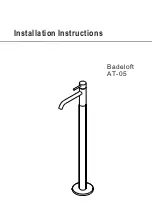
MERLIN LEGEND Communications System Release 5.0
Feature Reference
555-650-110
Issue 1
June 1997
Features
Page 67
Automatic Route Selection
ARS allows up to 16 programmable tables, each of which may contain one of the
following types of information:
■
Area Code Tables. These tables are lists of 3-digit area codes. Area code
tables are useful when just one type of line/trunk (for example, a regional
WATS trunk) is used for all calls to each area code on the list.
■
Local Exchange Tables. These tables list 3-digit exchanges within the
local area code. They can be used to route calls over in-state WATS lines.
■
6-Digit Tables. If the cost of calls to another area code varies according to
the exchange, this table can be used to route calls on different pools,
depending on both the area code and the exchange.
In a 6-Digit Table, an area code is the first entry. The remaining 99 entries
are exchanges within the area code. The system scans the first six digits of
the user-dialed number (area code and exchange) to route the call.
■
1 + 7 Tables. In some areas, callers must dial a
1
and a 7-digit number to
call certain exchanges, even though the call is within the local area code. A
1 + 7 Table contains a list of local area code exchanges that require dialing
a
1
but
not
an area code before the 7 digits.
In addition to the fully programmable tables, ARS has four factory-set tables:
■
Dial 0 Table. This factory-set table routes calls to numbers that start with 0.
The international dialing code, 011, is treated as a special case and can be
put into a programmable table. If 011 is not specified in a programmable
table, international calls are routed through the Dial 0 Table. Programming
of this table is limited to a single pool, its FRL, and system-prefixed digits.
■
Special Numbers (N11) Table. This factory-set table routes calls to the
special numbers 411, 611, 811, and 911. The main pool is always used.
This table is not programmable.
■
Default Toll Table. This factory-set table routes toll calls to numbers that
do not match entries in any of the area code, 6-digit, or 1 + 7 digits. This
table has two subpatterns of up to six routes each, but neither absorbed
digits nor system-prefixed digits are used.
■
Default Local Table. This factory-set table routes local calls to numbers
that do not match entries in the local exchange tables. This table has two
subpatterns of up to six routes each, but neither absorbed digits nor
system-prefixed digits are used. In Release 3.1 and later systems, routes
assigned to the default local table are factory-set with a Facility Restriction
Level of 2.
The system can have up to 20 tables, 16 of which are fully programmable. The
Dial 0, Special Numbers (N11), Default Toll, and Default Local tables are
factory-set and allow limited programming.
Each table (where appropriate) can have two subpatterns (A and B) with an
associated start time. The start time for Subpattern A is specified as the stop time
for Subpattern B. One subpattern or the other is selected based on the time of day
















































